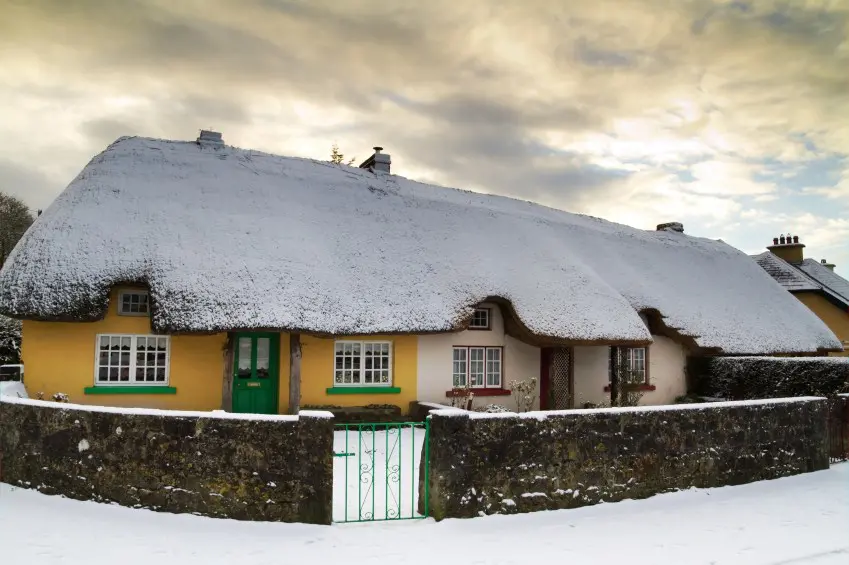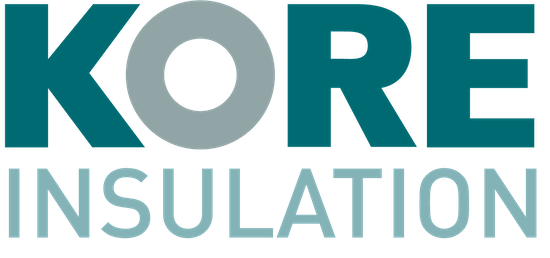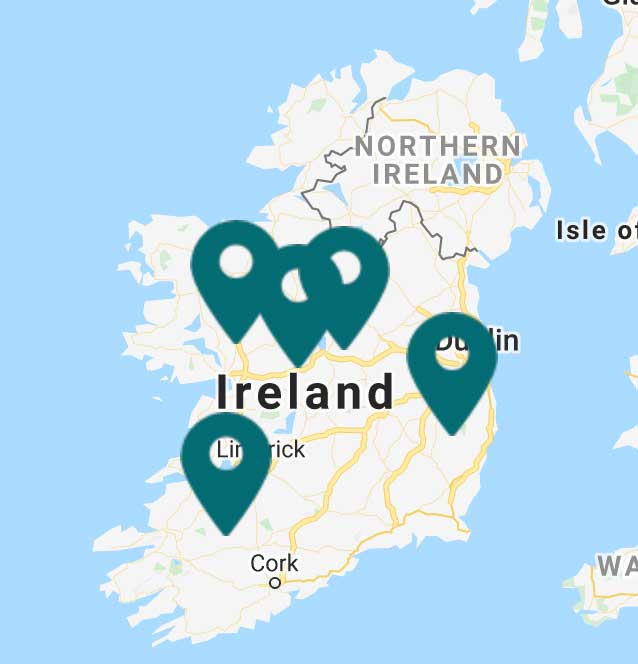
With autumn here in full force, now is the time to start thinking ahead and preparing for the winter weather. As the days become shorter and the temperature drops, you may find that your spending more money on heating and electricity than you did during those long summer days. Luckily, it’s not too late to start preparing your home for the coming winter. Let’s take a look at 5 tips to help keep the heat in, your family healthy and more money in your wallet.
1. Consider upgrading your home’s insulation
If your home doesn’t have adequate insulation you’re wasting heat and throwing your hard-earned money away. Up to 30% of your home’s heat could be lost through the roof, so start with the attic if there’s no insulation or if it needs to be topped up. You should have 250-300mm of attic insulation depending on the type of insulation material you choose. Building regulations in Ireland require a U-value of at least 0.16 W/m2k for a pitched roof – so keep this in mind when choosing an insulating material. There are insulated attic flooring systems available so you don’t have to compromise space for comfort, either.
Up to 33% of your home’s heat can be lost through uninsulated walls – jumping up to 45% if your home has uninsulated solid walls. Many homes in Ireland were designed with a wall cavity, making them suitable for bonded bead cavity wall insulation or partial fill cavity wall insulation. Cavity wall insulation can be used in both new and existing builds and under normal conditions only takes a few hours to install. The insulating bead is injected directly into the wall cavity along with a bonding agent. This type of insulation drastically reduces thermal transmittance and does not absorb water. Homes with solid walls may benefit from solid wall insulation solutions such as external insulation or internal drylining.
In addition to attics and walls, you’ll want to ensure your hot water pipes are insulated along with your hot water cylinder. Using pipe insulation and lagging jackets will keep your hot water up to temperature longer and require less energy so you’re not constantly reheating. It’s also a good idea to to insulate cold water pipes and tanks to prevent freezing during the winter that could lead to burst pipes on days when temperatures drop below 0 degrees.
If you live in the Republic of Ireland and your home was built before 2006 there may be grants (Better Energy Homes & Better Energy Warmer Homes Scheme) available to help cover the cost of insulation, heating and boiler control upgrades. In addition, KORE’s Energy Efficiency Incentive may be able to help you earn a discount on your next electricity bill when you install a qualified energy efficiency measure.
2. Close off draughts
Up to 20% of your home’s heat can be lost through air draughts around windows and doors. The good news is these are some of the most inexpensive problems to fix. There are many products available, including draught proofing solutions for internal and external doors, draught proofing for windows and even brush covers for letterboxes.
When installing draught proofing solutions ensure you’re not covering vents, especially those in the kitchen and bathroom for the ventilation of steam, or vents in rooms with a solid fuel-burning appliance.
3. Have your boiler serviced annually
It’s important to have your boiler serviced on an annual basis to ensure it’s operating properly. A well-maintained boiler will run more efficiently, saving you money on natural gas, LPG or oil during the heating season. Boiler servicing should take less than an hour and cover a visual inspection for leaks, cracks and corrosion, replacement of a fuel filter, overall performance checks, replacement of the burner nozzle and an adjustment of the burner pressure. The boiler service may differ depending on the type of fuel used.
While many people may go years in between boiler servicing, it comes at the cost of decreased fuel efficiency due to soot build-up and improper settings. To decrease the chance of of breakdown and safety hazards alone an annual service is worth the small cost. Boiler servicing should only be carried out by a qualified and experienced service technician.
4. Don’t forget to clean the chimney
According to the Chimney Sweeps Association of Ireland, 60-65% of all fires attended in Ireland are the result of a chimney fire. Your chimney should be swept once per year if burning smokeless fuel, twice per year if burning coal and four times per year if burning wood.
Burning fires creates soot and creosote. Creosote is a sticky and flammable substance that can lead to an increased risk of chimney fires if not removed properly. Even if you don’t burn fires that often, it’s still advisable to have your chimney inspected for damage once per year. Waiting until the autumn or winter to have your chimney inspected and cleaned can result in long delays, so it’s best to have it completed in the spring, if possible.
A chimney free of soot and debris means cleaner burning fires, and a decreased risk of chimney fires and carbon monoxide poisoning to occupants of the household.
5. Test your smoke alarms and carbon monoxide detectors
While we’re on the topic of carbon monoxide, it’s important to test and check every smoke and carbon monoxide detector in the house, especially if you use fuel-burning appliances. Carbon monoxide is a colourless and odourless gas – hence the name “the silent killer.” On average, 1 to 2 people die every year in Ireland alone due to carbon monoxide poisoning, even though it’s preventable.
To make it easy to remember, test your smoke alarms and carbon monoxide detectors twice a year when the clocks change for the beginning and end of daylight savings time – it could save your life.
Do you have any other tips on how you could prepare your home for the winter? Be sure to comment and share your thoughts below!
Interested in upgrading or installing new insulation to increase home energy efficiency? Request a quotation today!

